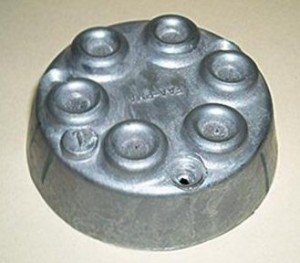Die casting stands as a cornerstone in modern manufacturing, offering unparalleled precision and efficiency in shaping intricate metal parts. However, understanding how to acquire die casting part prices is pivotal for businesses aiming to optimize costs and make informed decisions. This article serves as a roadmap, elucidating the steps involved in obtaining accurate and competitive prices for die casting parts.
1. Define Your Requirements
Begin by delineating the specifics of your project. This entails:
Part Design: Furnish detailed drawings, CAD models, or physical samples of the desired part. Specify dimensions, tolerances, and surface finish requirements.
Material Selection: Choose the appropriate metal alloy for your application, considering factors like strength, corrosion resistance, and thermal conductivity.
Production Volume: Estimate the quantity of parts required per order and project lifespan. Production volume significantly influences pricing, with higher volumes often leading to reduced per-part costs due to economies of scale.
2. Research and Identify Suitable Suppliers
Conduct thorough research to identify potential die casting suppliers capable of meeting your requirements. Key considerations include:
Expertise and Experience: Seek suppliers with a proven track record in die casting, particularly in your chosen metal alloy.
Capacity and Capabilities: Ensure that the supplier possesses the requisite equipment, facilities, and expertise to handle your project’s specifications and production volume.
Quality Assurance: Verify that the supplier maintains robust quality control measures to uphold the consistency and reliability of their products.
3. Request for Quotations (RFQs)
Reach out to selected die casting suppliers and submit a comprehensive Request for Quotation (RFQ). Essential elements of the RFQ include:
Part Specifications: Provide detailed part drawings, CAD models, or samples.
Material Requirements: Specify the type and grade of metal alloy required.
Production Volume: Indicate the estimated quantity of parts needed per order and over time.
Additional Considerations: Include any special requirements such as surface finishes, secondary operations, packaging, and delivery schedules.
4. Evaluate and Compare Quotes
Upon receiving responses to your RFQs, carefully assess and compare the quotes provided by different suppliers. Consider the following factors:
Price: Compare the total cost per part quoted by each supplier, encompassing tooling costs, unit production costs, and any ancillary charges.
Lead Time: Evaluate proposed lead times for tooling production, initial samples, and full production runs. Ensure alignment with your project timeline.
Quality and Reliability: Investigate the reputation and track record of each supplier in delivering high-quality, dependable products. Request samples or visit facilities, if feasible, to ascertain capabilities firsthand.
5. Negotiate and Finalize Terms
Upon selecting a preferred supplier based on pricing, capabilities, and quality, engage in negotiations to finalize terms. Discuss potential areas for negotiation, such as pricing adjustments, payment terms, or delivery schedules. Strive to establish a mutually beneficial relationship that satisfies your project needs while considering the supplier’s capabilities and constraints.
Conclusion
Securing accurate and competitive prices for die casting parts demands meticulous planning, thorough research, and effective collaboration with experienced suppliers. By defining project requirements, identifying suitable suppliers, submitting comprehensive RFQs, evaluating quotes, and negotiating terms, businesses can navigate the process adeptly and optimize costs for their die casting projects. Prioritize factors like quality, reliability, and long-term partnership when selecting a die casting supplier to ensure project success and sustained competitiveness in the marketplace.
Review our Cast Parts Blog
gives information on how to get a Aluminum Castings and Zinc Castings.
To get Castings Prices look at this website if you are looking for Cast Aluminum Parts.
This is where you find information on Aluminum Casting Process.
Contact:
Cast Parts Die Casting Company
818-982-9200
Sales@Cast-Parts.com

